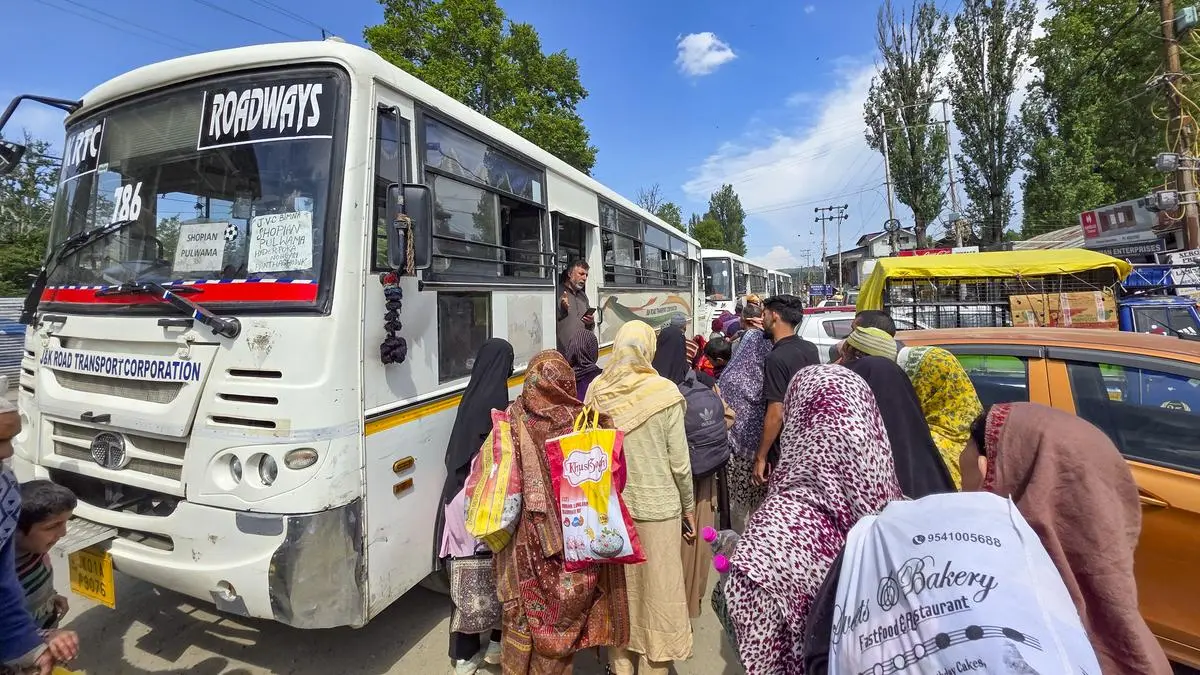
Residents of villages near India-Pakistan border, who were evacuated to safer places due to recent attacks from Pakistan, return to their homes after both countries reached a bilateral understanding, at Uri in Baramulla district, Jammu & Kashmir
| Photo Credit:
–
As calm returns to border villages in Jammu and Kashmir, unexploded ordnance remains a major concern for displaced residents returning to their homes.
Following Operation Sindoor, intense cross-border shelling along the Line of Control ( LoC) and the International Border ( IB) had spurred the displacement of thousands of people from the border villages in both Jammu and Kashmir divisions.
However, after India and Pakistan agreed to a ceasefire, people have started returning to their native places, though the fear of leftover explosives still lingers.
In the Valley, police on Sunday issued an advisory asking people not to return to their villages as there is the risk of unexploded shells and explosives fired by Pakistan.
Similar advisories were issued in the border districts of Jammu where people were asked to avoid touching any suspicious object. The people are asked to immediately vacate the area and inform police in case an unexploded shell is discovered.
According to reports, intense skirmishes along the LoC and IB in Jammu and Kashmir resulted in the temporary displacement of over 2 lakh people.
Back to villages
“On Monday, the authorities allowed us to return to their homes in the several border villages of Baramulla after the area was sanitised”, a resident from Uri told businessline.
Official sources said that police disposed of unexploded ordnance in six border villages—Gowhalan, Slamabad, Gangerhill, Kamalkote, Gawlata, and Madhan—in Baramulla, after which residents were allowed to return to their homes.
Yousuf Jameel, a local journalist from Poonch said that people have begun returning to town and other villages.
He, however, said that they remained cautious about suspicious objects, fearing they could be unexploded ordnance.
“Police have already issued an advisory regarding the unexploded ordnance”, Jameel added.
Another struggle
Unexploded ordnance remains a persistent threat for border residents in the aftermath of cross-border shelling with explosions often resulting in deaths or life-altering injuries, including among minors.
Between 2000 to 2015, at least 187 people including 93 minors were killed by the leftover shells and explosives in Jammu and Kashmir.
Due to frequent ceasefire violations along LOC and IB, border villages remain littered with unexploded ordnance.
According to government data, there were 5,133 ceasefire violations along the IB and LoC in Jammu and Kashmir in 2020—an increase from 3,479 incidents in 2019 and 2,140 in 2018. These figures indicate that the number of violations in 2020 was the highest recorded since the 2003 ceasefire agreement.
In 2002, following a massive troop buildup along the borders in the wake of the Parliament attack, around 200,000 landmines were reportedly planted along the Line of Control (LoC) and International Border (IB) in the Jammu region. This move led to the displacement of around 1.5 lakh families from frontier villages. Although demining efforts began after India and Pakistan committed to peace in 2004, dozens of people were killed and many others maimed by leftover mines.
“It is not humanly possible to clear each border village of unexploded ordinance”, said a social activist from Baramulla.
He said that people should now avoid suspicious objects and stay cautious as much as possible to prevent further casualties
Published on May 12, 2025
Anurag Dhole is a seasoned journalist and content writer with a passion for delivering timely, accurate, and engaging stories. With over 8 years of experience in digital media, she covers a wide range of topics—from breaking news and politics to business insights and cultural trends. Jane's writing style blends clarity with depth, aiming to inform and inspire readers in a fast-paced media landscape. When she’s not chasing stories, she’s likely reading investigative features or exploring local cafés for her next writing spot.






